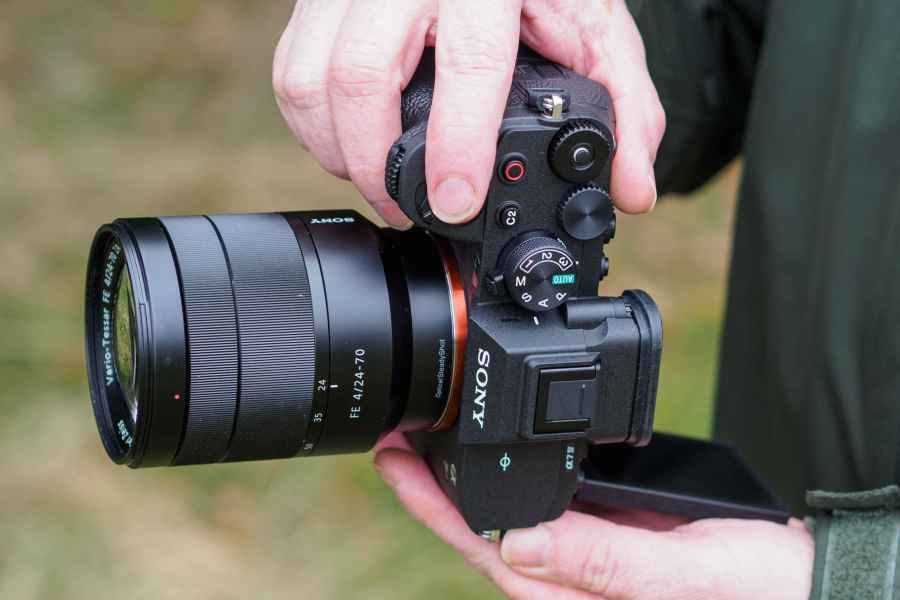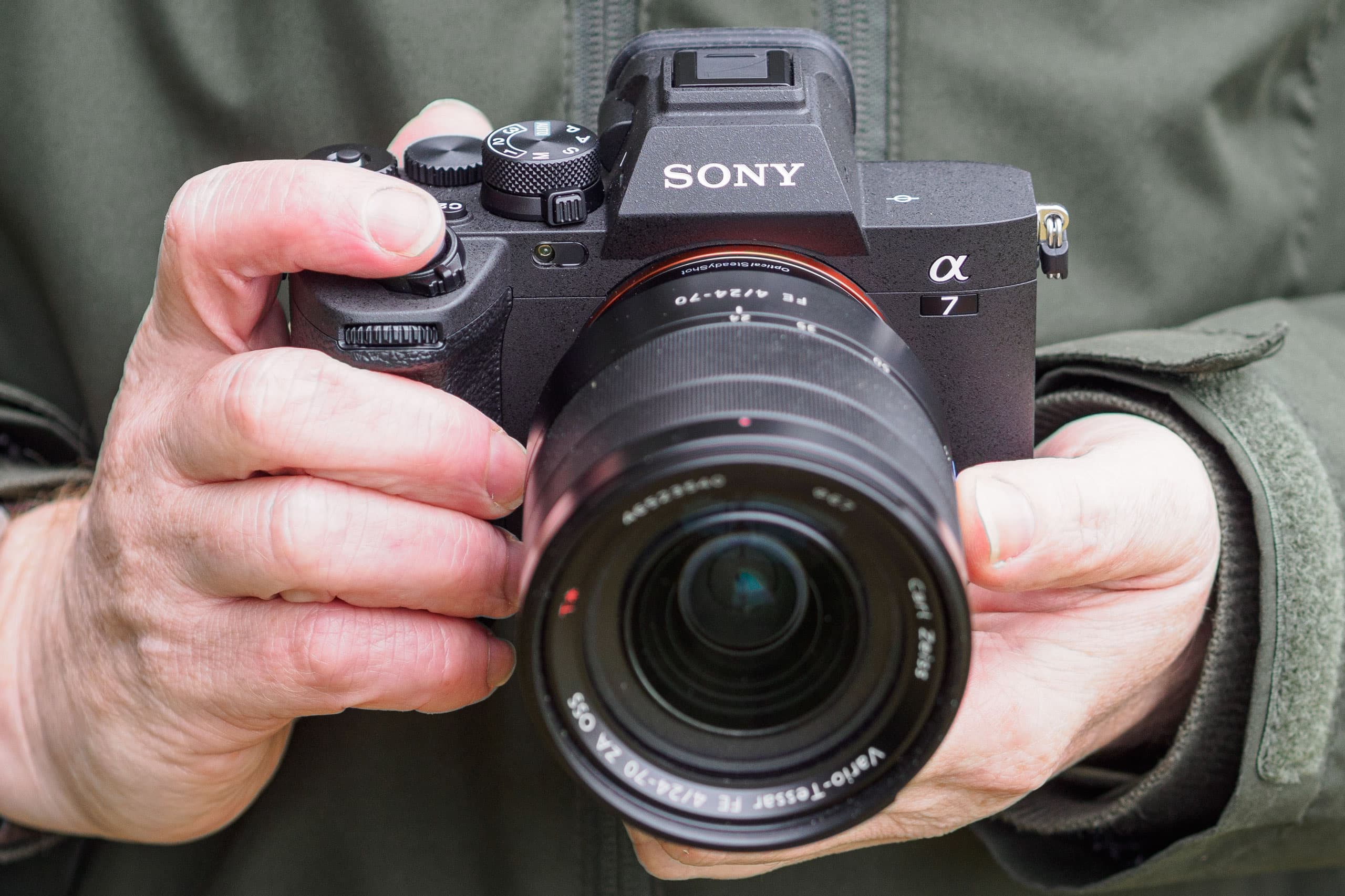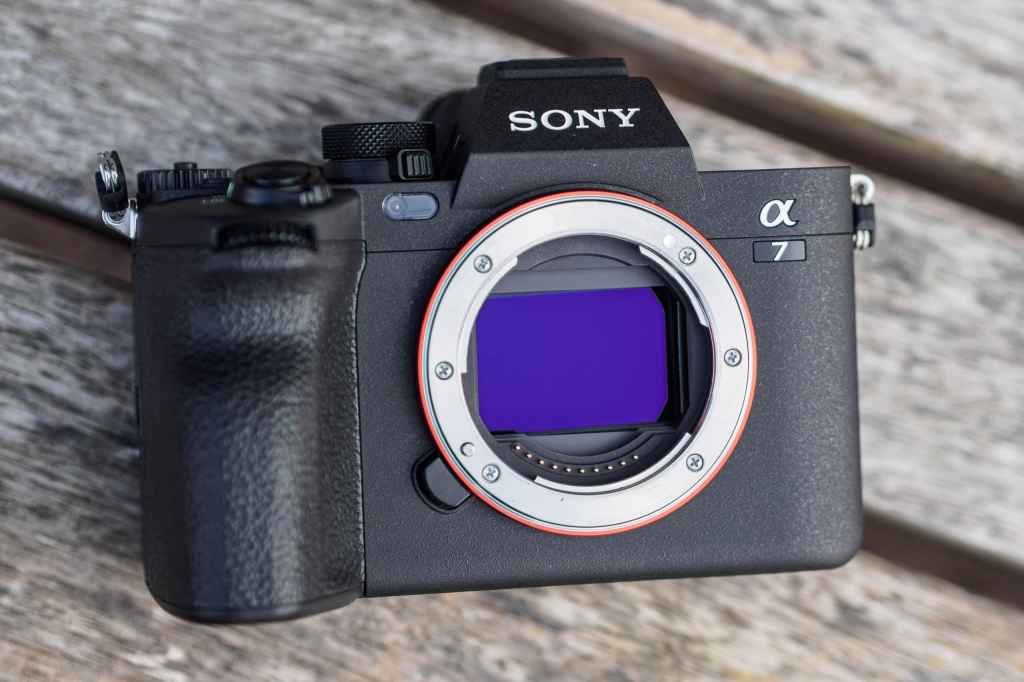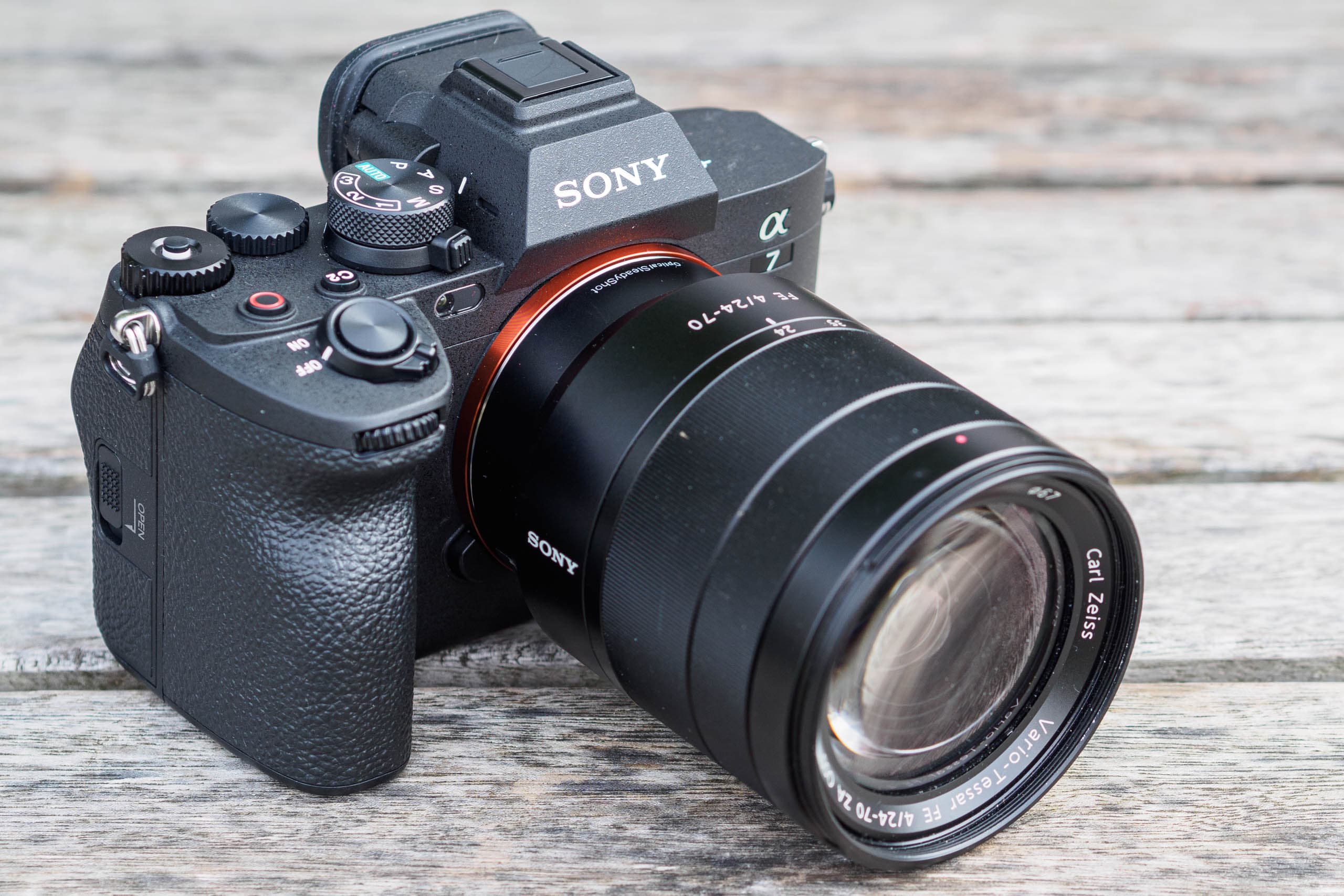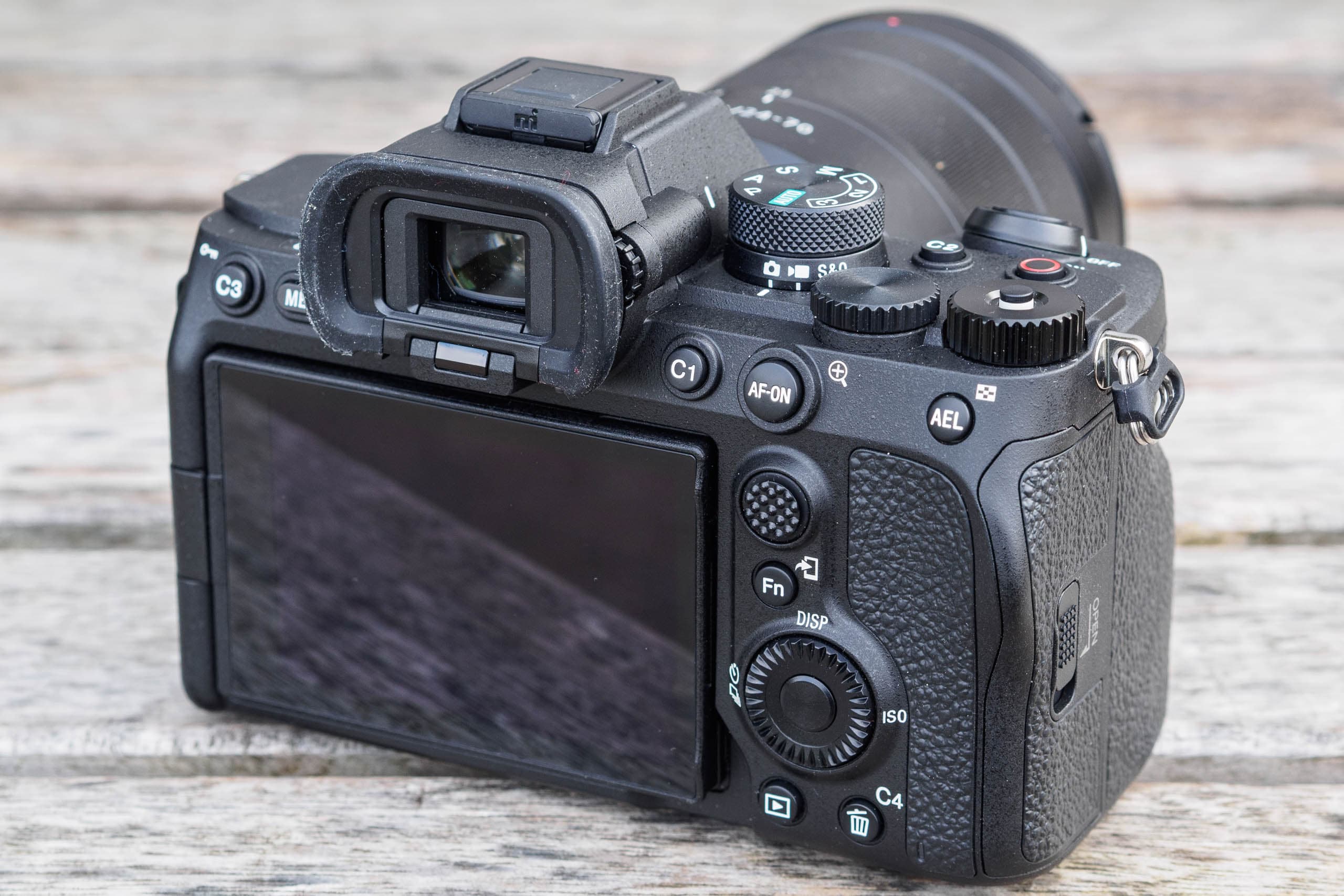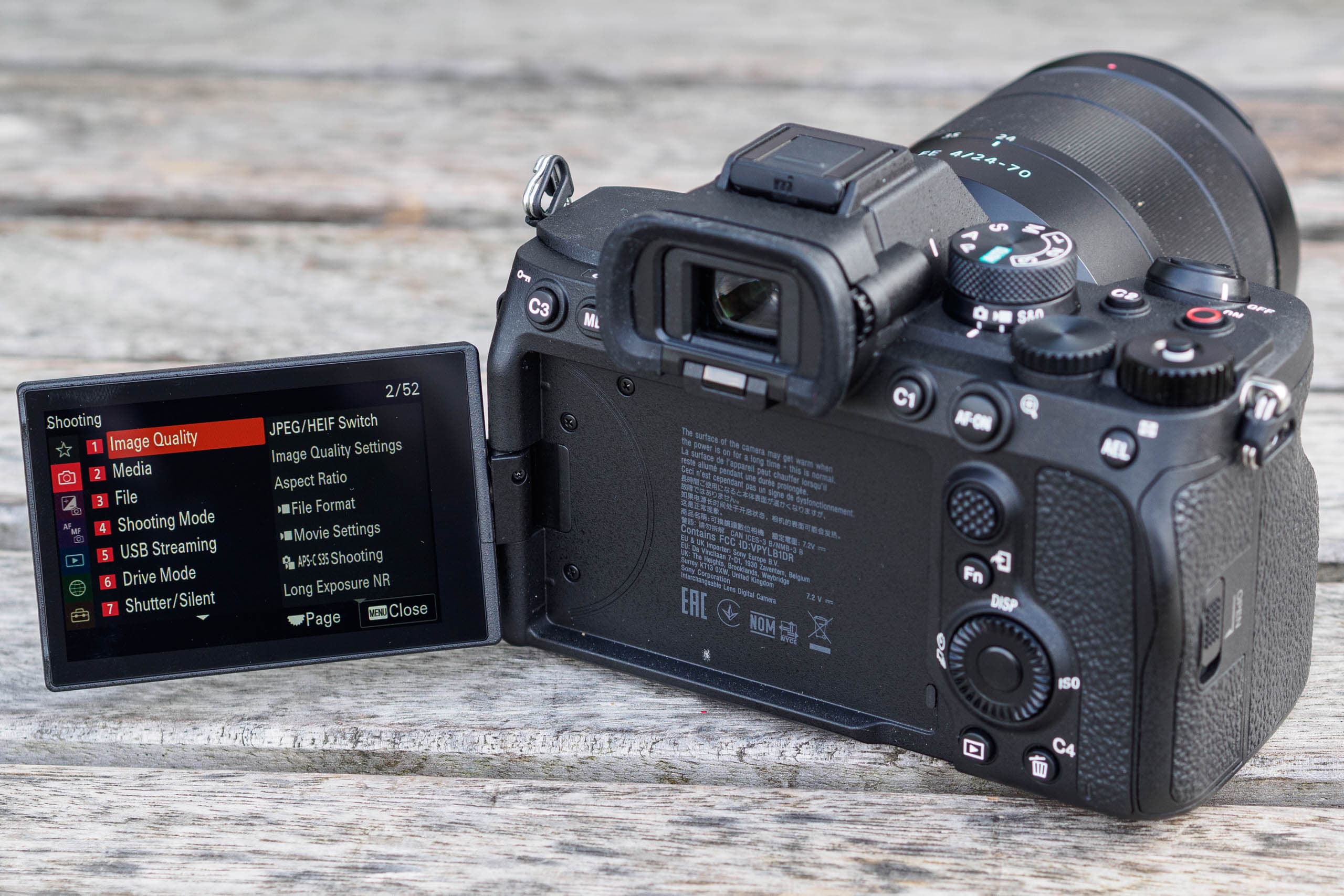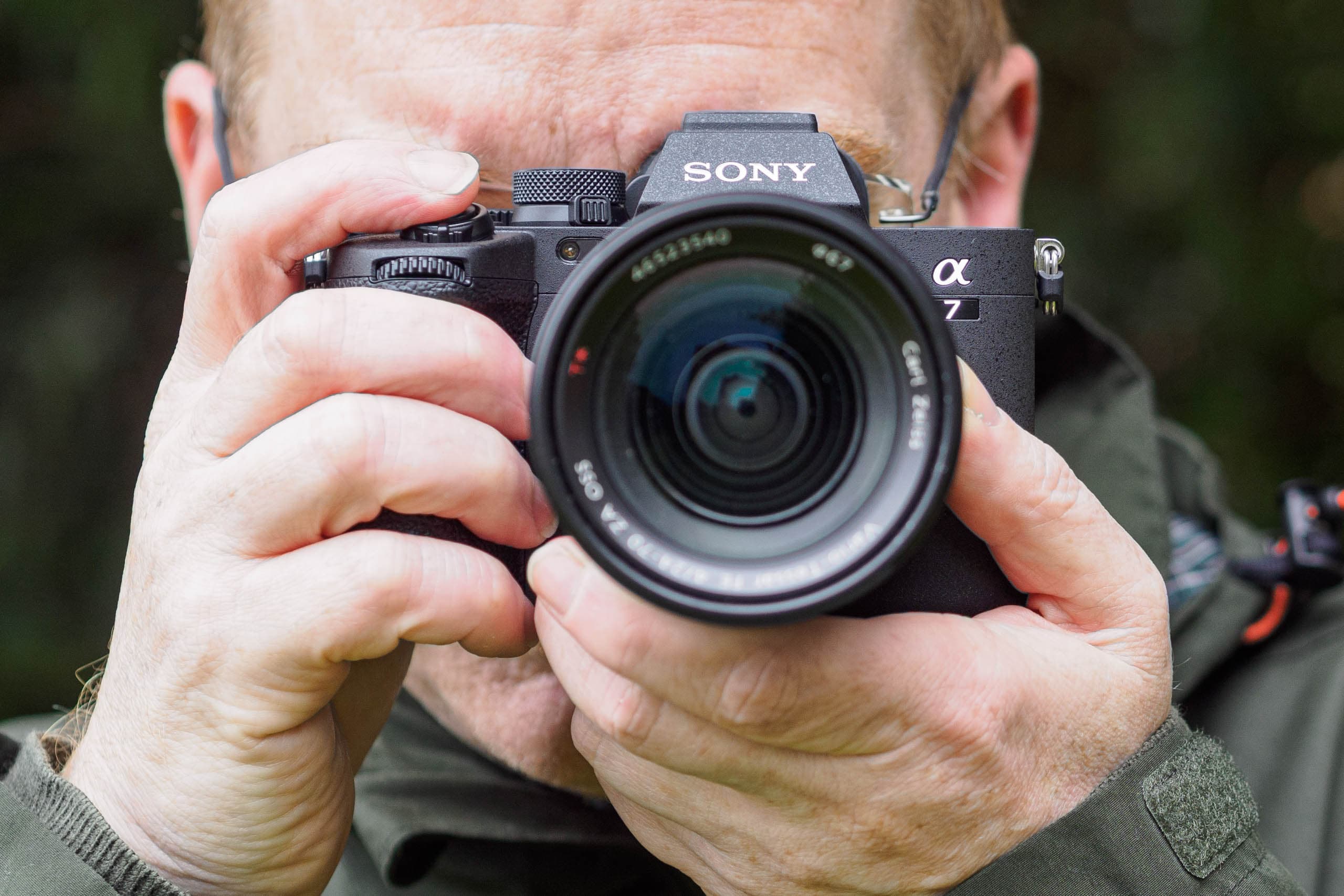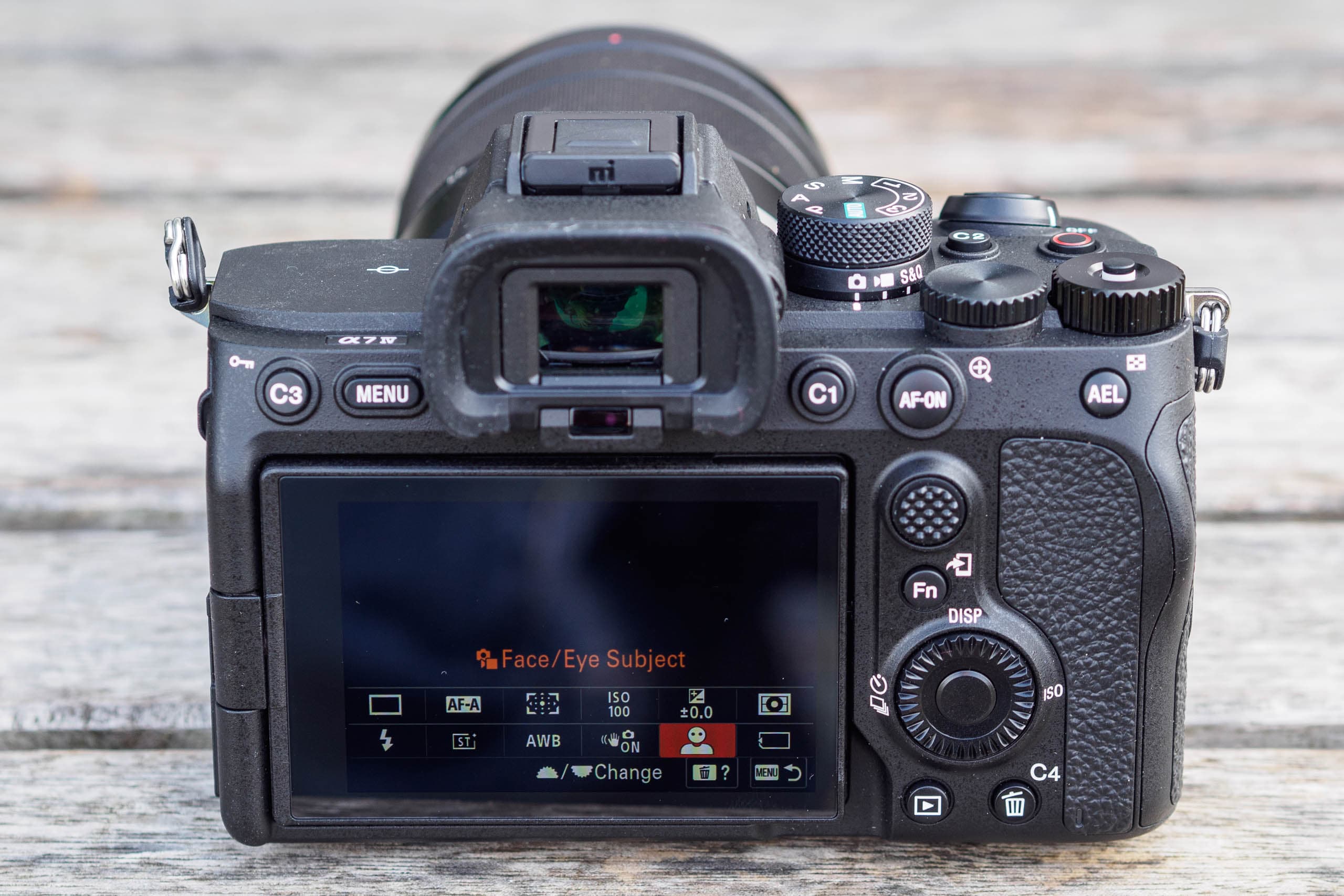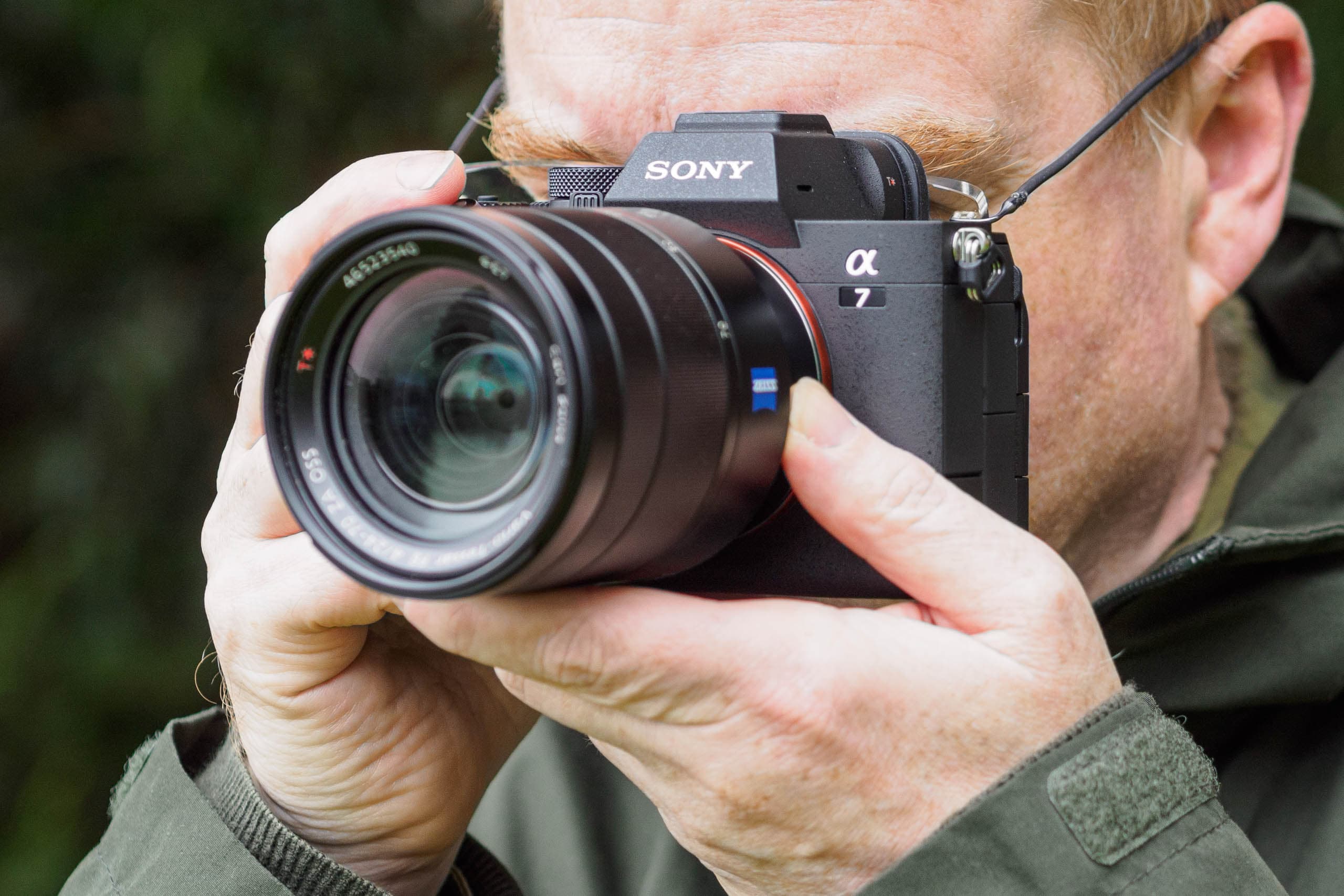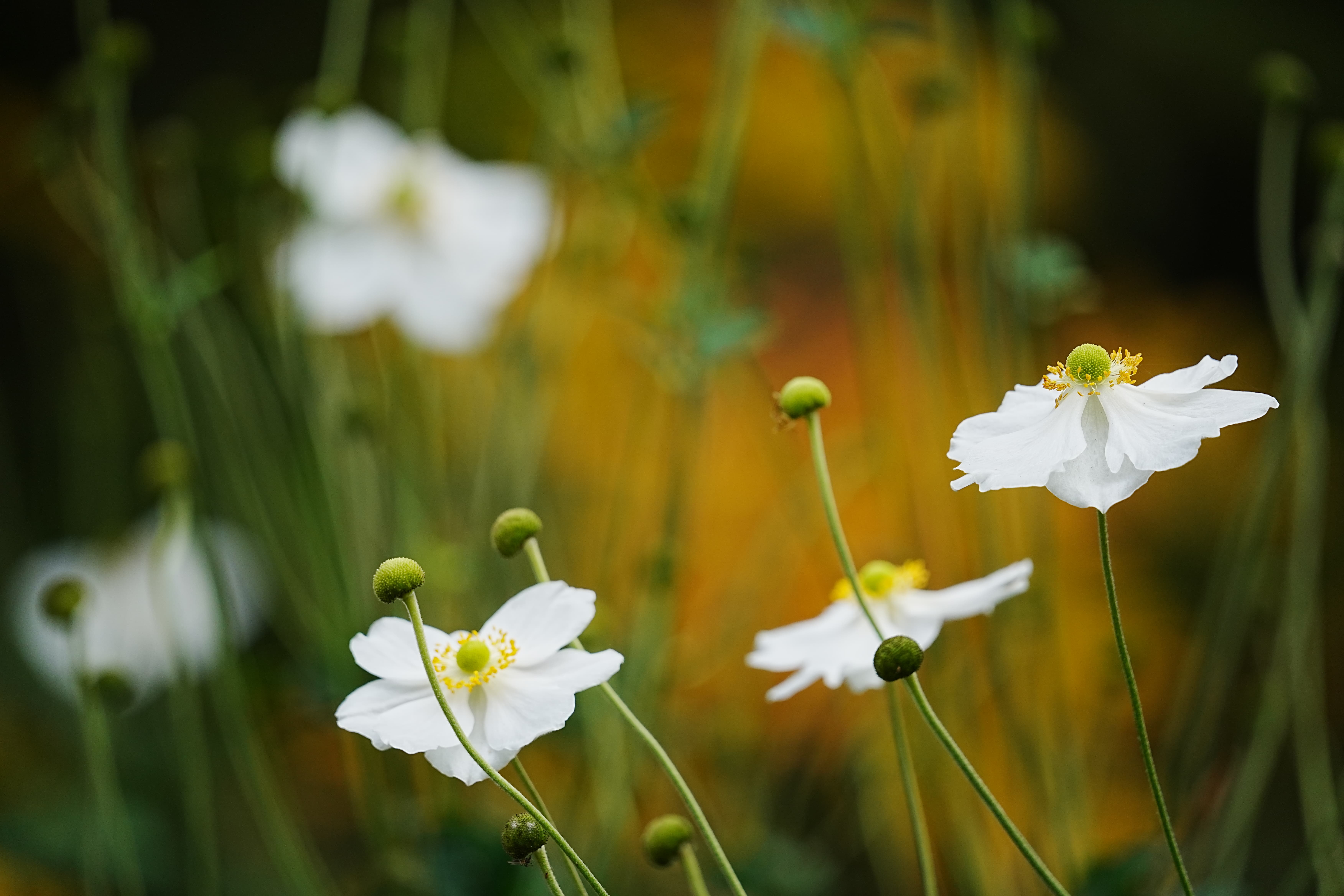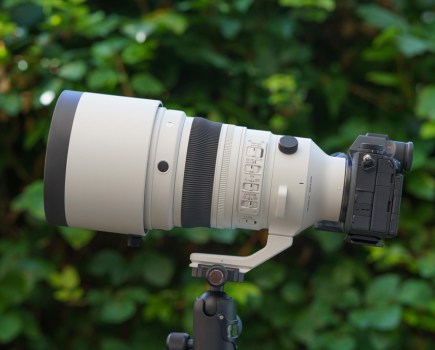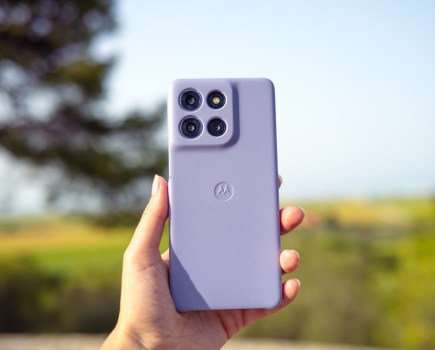Amateur Photographer verdict
A solid contender for serious enthusiasts, the Sony Alpha A7 IV is strong in every regard. It balances stills and video capabilities admirably; if not quite matched by its handling experience- Excellent image quality; more detail than 24MP or 20MP rivals
- Superb autofocus with extremely capable subject recognition
- Large grip and revised controls improve handling
- Fully articulated screen gives great compositional flexibility
- Improved menus and touch interface are very welcome
- AF system is over-complicated to configure
- Rear top control dials easily confused by touch
- Still no in-camera raw conversion
The Sony Alpha 7 IV (Sony A7 IV) is based around a 33MP sensor, boasts a sophisticated autofocus system and can shoot at 10 frames per second. Its large, high resolution electronic viewfinder is joined by a fully articulated rear screen, and Sony added a comprehensive touch interface. Now down to $1,998 / £2,149 body-only, it costs much less than its successor, the Sony A7 V, which took its place among our top full frame cameras of all makes.
At a glance:
- $1,998 / £2,149 body only
- $2,198 / £2,399 with 28-70mm zoom
- 33MP full-frame sensor
- ISO 50-204,800 (extended)
- 10 frames per second shooting
- 3.68m-dot viewfinder
- 3in fully articulated touchscreen
- 5-axis in-body stabilisation
- 4K 30p video recording
Sony launched the Alpha 7 IV in October 2021, aiming it at both professional photographers and the hybrid stills/video market, such as wedding and event photography. It didn’t have the sheer resolution of the Alpha 7R series, but high resolution sensors bring difficulties with full width video capture. The Alpha 7 IV, therefore, is seen as striking a balance between stills resolution and full width 4K 30p video capture ‘oversampled’ from the full sensor width for best quality. It remains one of the highest-spec’ed Sony models in its class.
It can shoot 4K 60p video too, but only in an APS-C/Super 35 crop mode. It’s not alone. Amongst its rivals, the Panasonic Lumix S5 and S5 II/X have the same restriction, though the Canon EOS R6 Mark II does not.
The Sony Alpha 7 IV’s video capabilities are very good, even now, though its rivals are catching up and even surpassing it in this respect – the Lumix S5 II is considerably cheaper, too, at $1,598 / £1,599 body only. But for stills photographers, the Alpha 7 IV’s 33-megapixel sensor does rather put it in a class of its own above its 24-megapixel rivals; you would have to pay considerably more to improve on it.
When Sony unveiled the Alpha 7 III at the start of 2018, the camera market was a very different place. The firm wasn’t so much the leader in full-frame mirrorless as the only mainstream player. At the time, the A7 III felt like a revolution, offering considerable advantages over its DSLR contemporaries. Indeed, its all-round qualities were such that when Canon and Nikon eventually joined the mirrorless fray, both took two generations of camera to catch up.
The landscape soon changed, though. The Canon EOS R6 and Nikon Z6 II proved at least a match for the A7 III in specification, while also benefiting heavily from their makers’ decades of camera-design nous. They played well with legacy EF and F-mount lenses, too, which is of considerable importance for DSLR users considering a switch to mirrorless.
Panasonic also offered a strong alternative with the Lumix S5 and Lumix S5 II, particularly for those who are equally interested in stills and video. So, with the Alpha 7 IV, the pressure was on Sony to offer a decent enough alternative to prise potential buyers from their loyalty ties to other brands.
Sony’s response was to come up with a considerable upgrade to its already excellent mainstream model. The headline update is an 33MP sensor, but the A7 IV also gains a fully articulated screen rather than a tilt-only unit, a higher-resolution viewfinder and an improved control layout and handling. The result is an impressive all-rounder and one of the best Sony cameras, but one that comes with a higher price tag than most of its peers.
Features
Firstly, let’s look at the A7 IV’s main features. Its 33MP back-illuminated sensor outputs 7,008×4,672-pixel images, which represents a 16% increase in linear resolution over its 24MP predecessor. Thanks to an updated Bionz XR processor, the camera is still capable of shooting at 10 frames per second with autofocus tracking. Sony claims a massive buffer of at least 828 frames in full-resolution raw, but this requires use of a CFexpress Type A card.
A standard sensitivity range of ISO 100-51,200 is on offer, extendable to ISO 50-204,800. Shutter speeds encompass 30 to 1/8000sec using either the mechanical or silent electronic shutter, but landscape photographers will be disappointed to learn that Sony still hasn’t grasped the usefulness of providing a count-up timer in bulb mode.
In-body image stabilisation promises up to 5.5 stops of shake compensation, which is improved by half a stop over the A7 III, but some way behind the top-rated systems available. In comparison, Canon and Olympus both promise more than 7 stops.

Autofocus employs a combination of contrast detection and on-chip phase detection, with 759 selectable focus points covering 94% of the frame. Sony says that focusing speed in AF-S mode is 30% faster, and that subject tracking performance has also been improved over the A7 III.
Eye detection and tracking is available not just for humans, but also animals and birds, in both stills and video shooting. One crucial interface improvement is that it’s now possible to display the focus area outlined in red, unlike the often-invisible grey used on the A7 III.
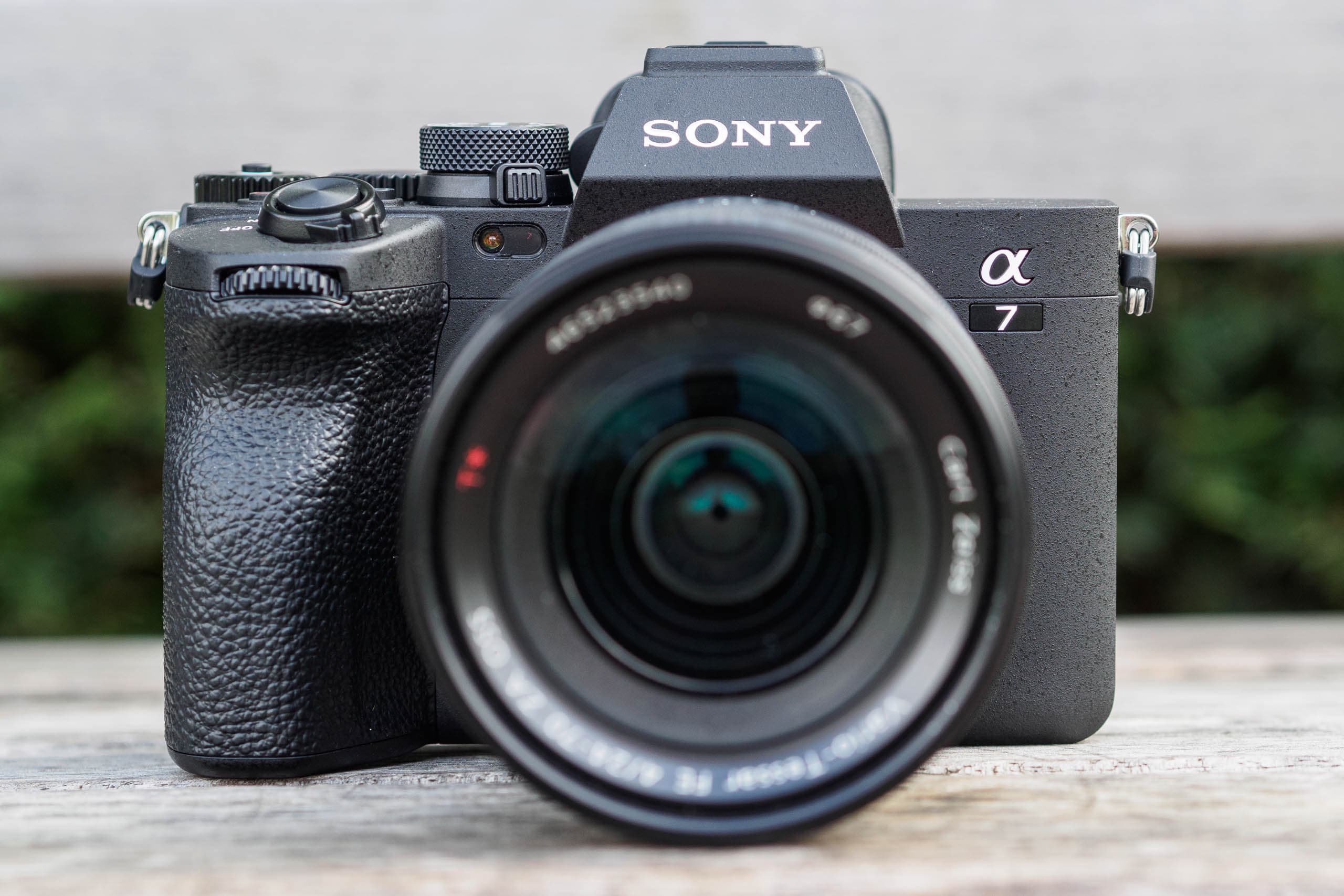
Sony says that it’s further improved its colour reproduction, paying particular attention to skin tones of all shades. Like the firm’s other recent models, the A7 IV now uses Creative Looks, which provide greater scope for adjustment compared to the older Creative Styles.
The catch is that they’re named using meaningless abbreviations such as FL, SH, IN and VV2, which give little clue as to what each is supposed to be doing. Sony has also, yet again, failed to include in-camera raw conversion, which is a standard feature elsewhere.

Image files can be recorded in either JPEG format, or HEIF with a choice of 8-bit or 10-bit colour. Three raw format types are available – the default compressed mode gives the highest performance but can be prone to artefacts when making large adjustments in processing. Uncompressed and lossless-compressed raw options are also available, which don’t have the same problem but take up more space.
Videographers will be pleased to find a whole suite of updates, with the Alpha 7 IV’s 10-bit 4:2:2 output promising greater scope for grading in post-production compared to the A7 III’s 8-bit 4:2:0. Along with uncropped 4K at 30fps, the camera can now record at 60fps in Super-35 crop mode. Other updates include the addition of an All-I compression option, a maximum bitrate of 600Mbps, and support for the more efficient H.265 file format.
Sony has also built a digital audio interface into the hot shoe for wireless connection of compatible microphones and included a full-size HDMI port. In addition, it’s used the same heat-dissipating internal structure as in the Alpha 7S III to facilitate extended recording times.

Wireless connectivity is provided by Bluetooth and Wi-Fi, allowing remote control of the camera from a smartphone. Sony has finally added touch focus and touch tracking control to the Imaging Edge Mobile app, which was long overdue. Raw files can also now be transferred to your phone, as well as JPEGs, for editing in programs such as Lightroom Mobile prior to sharing.
Key features
Compared to its predecessor, the A7 IV boasts a substantially improved design.
- Storage Sony has again fitted dual UHS-II SD card slots. But the top one now also accepts CFexpress Type A media, promising vastly extended burst shooting.
- Vari-angle LCD The fully articulated rear screen supports high- and low-angle shooting in both portrait and landscape formats. It also provides expanded greatly touch functionality that extends to almost every aspect of the camera’s operation.
- Connectors The mic socket is placed high up on the side where it won’t block the screen, with a headphone socket beneath. The USB-C port supports super-fast 10Gbps transfers, and the micro USB port takes a wired cable release. There’s also a full-size HDMI port.
- Dust protection It’s possible to set the shutter to close when the camera is switched off to protect the sensor from dust when changing lenses. Sony warns against touching the shutter blades, as they’re easily damaged.
- Power Sony’s familiar NP-FZ100 battery promises over 600 shots per charge and can be charged via either the USB-C or micro USB port.
- Hot shoe In addition to accepting a flash, this now also has a digital audio interface for wireless connection of compatible microphones
Build and handling
While at first sight the A7 IV looks very similar to its predecessor, it has several significant external changes. In design and control layout, it’s most like last year’s video-focused Alpha 7S III, with a few further operational tweaks. But these are very much evolutionary, so existing A7 users should have no difficulty adjusting. Overall, the camera feels well-built and robust, with welcome touches like the hinged rubber port covers and better-designed memory card door adding increased confidence in its weather-sealing.
The first thing you notice on picking up the camera is its much-improved grip, which has the same taller and deeper profile as other recent full-frame Alpha models. It still lacks the sculpted, organic feel of the likes of the Canon EOS R6 Mark II and Nikon Z 6II, but it gives a much more secure feel in the hand compared with the A7 III.
This makes a big difference with larger telephoto lenses, such as 100-400mm or 70-200mm f/2.8 zooms. There’s still very little space between the grip and lens, which can be awkward for users with large hands, or when wearing thick winter gloves.

Another major design change comes with the mode dial, where the choice between still, video and S&Q (slow and quick) modes has been split off to a separate switch underneath, with a push-button lock on its front. The movie record button has also swapped places with the C1 button for easier access. But all the buttons are customisable, so photographers who are used to the previous layout can swap it back if they prefer.
In one of Sony’s continued blind spots, the A7 IV has no custom buttons on the front, in contrast to most of its peers, which is a shame as there are plenty of useful features that could be assigned to them.
Like previous Alpha 7 models, the A7 IV sports no fewer than four electronic dials for controlling exposure settings. However, the exposure compensation dial is now unmarked and freely rotating, which gives quicker access to the extremes of the +/-5 EV available range.
All four dials can now be configured to the user’s preference, and separately for each exposure mode; for example, you could switch ISO from the rear dial to one on top. The main drawback is that the two top-plate thumb dials are very easily confused when you’re using the viewfinder, as they’re very close to each other and have the same operational feel.
For controlling autofocus, there’s a much larger AF-ON button on the back, along with an improved joystick for moving the AF point. The C1 button on the left shoulder selects between focus modes (single AF, continuous AF and manual), while C2 behind the shutter release selects the autofocus area mode. You don’t have to press a button to activate eye AF – it just engages when it’s needed.
Turning our attention to the onscreen interface, the A7 IV gains the improved menu system that debuted on the A7S III, which makes it easier to find and change settings within the huge range on offer. You can group your most-used settings onto a My Menu tab, but the process of doing so is rather complicated.
Touchscreen control is considerably expanded to cover almost all aspects of the camera’s operation, including the main menu and the onscreen Fn menu, although it’s not always obvious from the onscreen interface. The net result is a considerably improved user experience, as it’s much quicker and easier to change secondary settings.
Viewfinder and screen
Compared to its predecessor, the A7 IV gains major updates when it comes to composing images. Its electronic viewfinder now employs a 3.68m-dot panel, with a refresh rate up to 120fps for smoother rendition of motion. The live view feed is visibly cleaner too, with fewer artefacts such as jagged edges in diagonal lines. As a result, the viewing experience is a considerable step up, and at least a match for its competitors.
Sony previews colour and exposure in the live view feed, and by default sets the lens to the taking aperture, giving full-time depth of field preview. You can display a live histogram and electronic level; but still not both at the same time; instead, you have to cycle through view modes using the DISP button as before.
There’s also no option to mimic an optical viewfinder in terms of colour and contrast, rather than previewing the camera’s JPEG processing. This is a useful feature that’s becoming increasingly common on other brands.
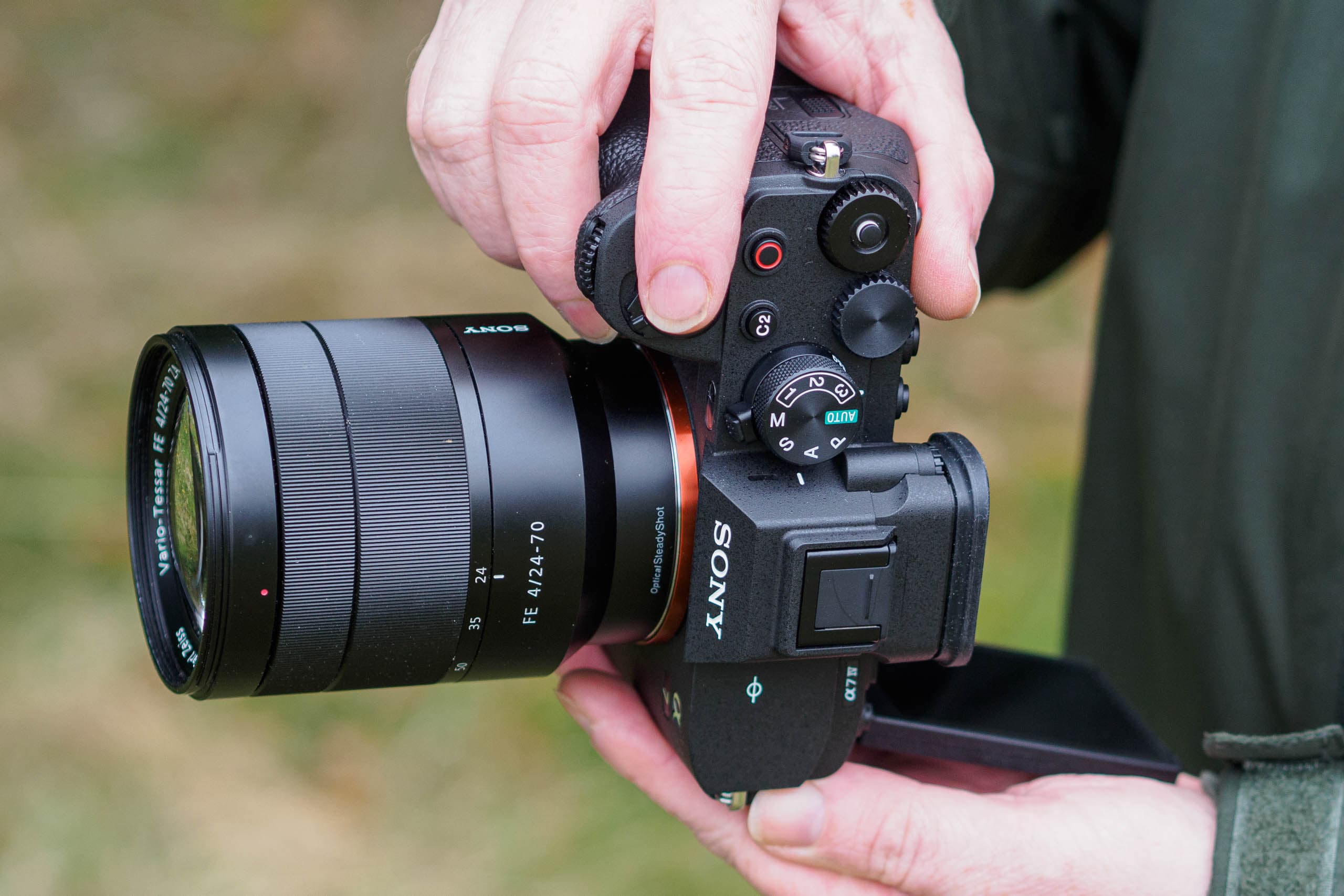
Most notably, the camera also gains a side-hinged, fully articulating screen. In some quarters, this is perceived as a video feature, given that one of its benefits is allowing the screen to be set facing forwards for vlogging. But it also facilitates high- and low-angle shooting in portrait format as well as landscape, which makes it really useful for photography, too.
However, it does have its drawbacks compared to the A7 III’s tilt-only screen: it’s slower to swing out, doesn’t work well with L-brackets for tripod shooting, and some photographers find the off-axis view in landscape format off-putting. Even so, I much prefer the fully articulating design.
Autofocus
Sony has been at the forefront of revolutionising autofocus via AI-based subject recognition, where instead of setting a specific focus point, the camera will identify and track focus on faces and eyes, or follow other moving subjects according to colour, pattern and distance. The A7 IV continued in this tradition, with the firm’s most impressive AF system to date, though the more recent arrival of the Sony A7R V and its dedicated AI processor has raised the bar again.
Nevertheless, the A7 IV still offers eye detection settings for humans, animals, and birds, all of which work astonishingly well. With other types of subject, you can choose between 759 AF points arranged across the entire frame, via the well-placed joystick.

In typical Sony fashion, the autofocus works phenomenally well. When shooting portraits, you can let face and eye detection do its thing, leaving you free to concentrate on composition. With moving objects such as trains or planes, the AF tracking does a brilliant job of sticking to your specified subject and not getting distracted by anything that temporarily obstructs your view.
Even with static subjects, engaging tracking allows you to experiment with different compositions while the camera holds focus on your specified subject.

The only real flaw is that Sony doesn’t make it especially easy to use all this technology. Nonsensically, tracking is still engaged from the AF area menu, where it comes complete with its own separate set of AF-area settings. It’s also greyed out and inaccessible unless the focus mode is set to AF-S.
My preferred solution was to modify the AF-ON button behaviour to also activate C-AF and tracking; indeed, I’m not sure why Sony doesn’t set this as standard. Also, choosing between human, animal and bird eye AF normally requires a trip deep into the menus, so I added this setting to the customisable Fn menu.
Another irritation, which could be especially confounding to photographers who only shoot video occasionally, is that tracking AF works completely differently when you switch the camera to movie mode. At this point, you have to select the subject by tapping the touchscreen, rather than with a half-press of the shutter button. It still works fine, but is a quite unnecessary inconsistency in the interface.
Performance
As we’d expect of a fourth-generation model, in practical use the A7 IV is very slick and refined. It starts up near-instantly and is highly responsive to both the touchscreen and the physical controls. The shutter sound is pretty unobtrusive too, if not quite as quiet as many other cameras.

Sony’s metering is generally very reliable, and I rarely needed to adjust the exposure compensation to any great extent. The firm’s JPEG colour output is ever-improving too, with the A7 IV’s standard Creative Look giving generally attractive results. But it can still be let down by the Auto White Balance, which has a habit of over-neutralising subjects that should have a dominant colour, and I generally preferred using a preset instead.

Even then, colours can almost invariably be improved by tweaks in an app such Snapseed before sharing them on your phone. I certainly wouldn’t rely on its ability to produce excellent JPEGs in the same way as brands such as Fujifilm and Olympus, but I suspect that most users will normally shoot in raw, anyway.

As for the raw image quality, there’s no obvious penalty for the increased resolution. The A7 IV gives really excellent images at low ISO settings, and while detail rendition noticeably deteriorates at ISO settings of 1600 or above, I’d still quite happily hike the sensitivity up to ISO 25,600 if necessary to get the shot.

With no Adobe raw support at the time of writing, it proved difficult to judge exactly how much dynamic range is available in the shadows. Based on my experience of processing its raw images in Sony’s free Imaging Edge desktop software, there’s clearly plenty of scope for brightening them and pulling up more detail without noise becoming troublesome.
Note that a later update to Lightroom in 2021 solved this issue and now it fully supports raw files from the Sony A7 IV. Also, Sony decided to replace the Play Memories Mobile app with the new Sony Creators’ App that lets you connect to your phone to remotely control your camera and when connected to the Sony Imaging Cloud you can upload your images or download new firmware updates.
When it comes to continuous shooting, the picture is complicated. At its headline 10fps speed, the A7 IV doesn’t provide live view between frames, which hinders following moving subjects. To get this, you need to drop back to the 8fps CH mode. If you prefer to shoot in lossless compressed or uncompressed raw, the speed drops to 6fps or 5.5fps respectively.
Sony’s promise of practically unlimited burst depth is contingent on using a CFexpress A card, but given that the cheapest costs $178 / £209 for 80GB, I doubt many photographers will buy one. But you won’t get the same burst performance with an SD card, unless you shoot in JPEG-only.
Using a Sony G-series UHS-II SD card with a rated write speed of 299MB/sec, I was able to shoot almost 130 frames in compressed raw before any stuttering, but this dropped to about 40 frames using raw + JPEG. This performance should still be perfectly adequate for most users, but it’s worth knowing that these limitations exist.

Sony’s in-body image stabilisation works well, meaning that you can reliably get the most from the sensor’s 33MP resolution. By shooting a set of duplicates, I was able to get some pixel-sharp images shooting hand-held at speeds as slow as 0.5 seconds using the Sony FE 50mm f/1.2 GM or Sony FE 24-105mm f/4 G OSS lenses. This isn’t quite as capable as the best systems around, but it’s still an extremely useful tool to have available.
ISO and noise
Just as we’d expect, Sony’s 33MP sensor delivers lovely clean images at low ISO settings, with lots of detail and no visible noise. The first sign of any loss in image quality comes at ISO 1600, with fine low-contrast detail just starting to blur under close examination.

As the sensitivity is increased further, the impact of noise becomes progressively more obvious, but I’d be still entirely happy shooting at ISO 12,800, which is the default maximum in Auto ISO. Even the ISO 25,600 setting yields files that are usable with a bit of work in raw processing (Sony’s JPEG processing also does a great job of eliminating noise, but is rather destructive of fine detail). However, the higher settings are best left alone.

Interested in wildlife photography? See how to do it and how to master animal photography
Below are 100% crops taken from our standard test scene. These are raw files processed using Sony Imaging Edge software, using default settings aside from less aggressive noise reduction (Amount = 5; Color noise reduction = 20; Edge noise reduction = 5). Click on any thumbnail to see the full-size image.

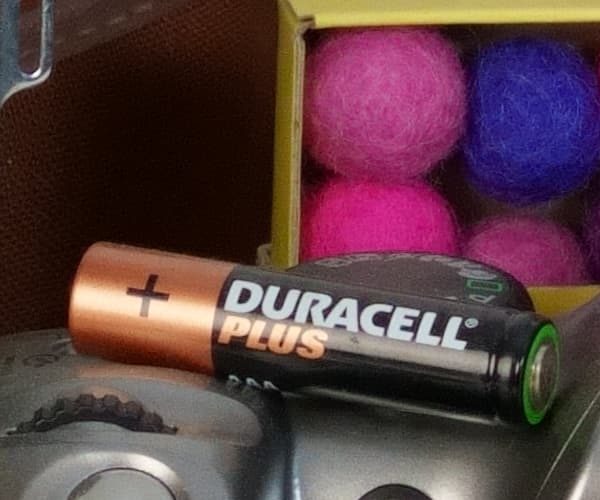





Verdict
Sony set itself a hard task when it came to following-up the A7 III. But with the Alpha 7 IV, the firm has produced a substantially improved camera that offers enough updates not only to tempt its existing users to upgrade, but also to turn the heads of DSLR users who might be considering making the transition to mirrorless.
In fact, while the A7 IV may appear superficially similar to its predecessor, it boasts substantial updates and improvements everywhere you look. Its 33MP sensor captures higher detail than its 24MP or 20MP rivals, giving greater scope for cropping or making large prints. Its sensor is so close to its rivals it makes no difference to the original ‘high-resolution’ A7R’s 36 megapixels, though the latest versions practically double the A7 IV’s resolution with 61MP, and the A7R IVA is still on sale at $2,998 / £2,999 body only, so not so very much higher than the A7 IV’s.
Sony has muddied the water further with its latest introductions, both compact, high-spec full-frame models: the A7C II with the same pixel count but cheaper at $1,999 / £1,998 body only, plus the A7CR, a 61MP camera at $2,798 / £2,649. Nevertheless, the A7 IV still delivers impressive dynamic range and high-ISO image quality.
The upgraded viewfinder, fully articulated screen, improved handgrip and long-awaited touch interface combine to greatly improve the shooting experience, too.

While many A7 III users will still be happy with their cameras, the A7 IV represents a hugely compelling update for users of older models. For DSLR users, its all-round abilities make it a serious alternative to continuing with the same brand, especially given the vast array of compatible lenses available.
Here, Sony’s decision to license the E-mount to third-party manufacturers brings a considerable advantage over Canon and Nikon’s closed approach, with plenty of excellent optics available from the likes of Samyang, Sigma, Tamron and Zeiss to complement Sony’s own sizeable and impressive range.

Compared to its most obvious competitors, the Alpha 7 IV ups the ante thanks to its high-resolution sensor and sophisticated autofocus. I still feel that its Canon and Nikon rivals sit more comfortably in your hand and are more pleasant to shoot with, but there’s a strong argument that the A7 IV offers the most useful feature set. For any serious enthusiast contemplating buying a new camera, it has to be right at the top of the list.

Find more great full-frame cameras in our guide to the best full-frame mirrorless cameras.
Sample images
Here’s a selection of sample images from the Sony Alpha 7 IV. All images copyright Andy Westlake / Amateur Photographer.

